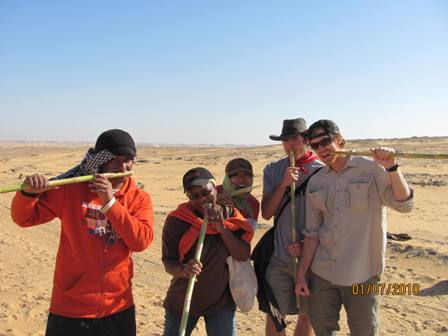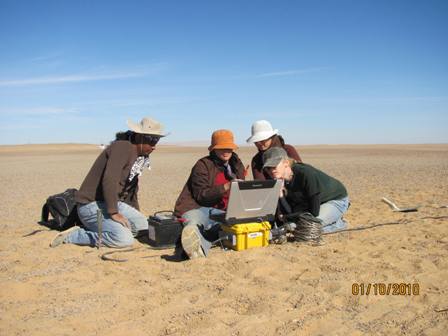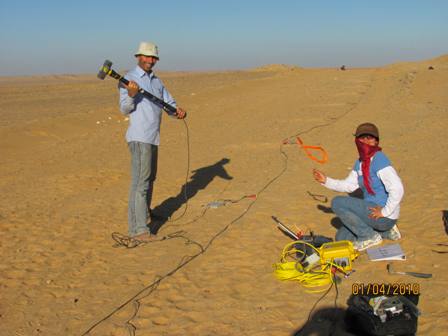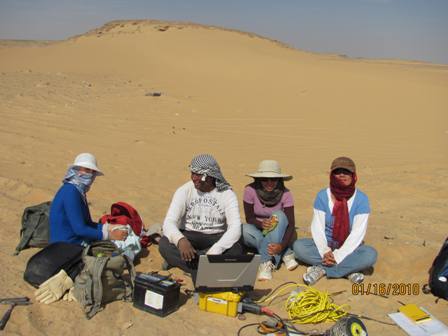IRES: Reconstructing the Geological History of the Egyptian Nile
NSF0756393; 4/1/08-03/31/11
PIs: Mohamed Abdelsalam, Estella Atekwana, Stephen Gao, and Kelly Liu
This award supports an international research experience for students in a project involving a team at the Department of Geological Sciences and Engineering at Missouri University of Science and Technology, Rolla, Missouri, led by Drs. Abdelsalam, Gao, and Liu, with Dr. Atekwana, School of Geology in Oklahoma State University (OSU) in collaboration with a team of Egyptian scientists at Sohag University in Egypt. The project will support researchers, graduate and undergraduate students from the U.S. universities for carrying remote sensing, geological, and geophysical investigations in the Egyptian Nile. The aim is to understand the relative roles of regional uplift and local pre-existing structure in influencing the evolution and re-organization of drainage systems and the emergence of long-lasting rivers. The project focuses on testing three hypotheses: (1) Regional uplift associated with the opening of the Red Sea produced W-flowing rivers that preceded the evolution of the Egyptian Nile. (2) The evolution of the Nile since ~6 Ma has been controlled by an N-trending canyon (the Eonile Canyon) extending from the Mediterranean Sea to southern Egypt. This canyon was formed during the Messinian Salinity Crisis. (3) The spatial distribution of the drainage related to both river systems is controlled by N- and NW-trending faults. Intellectual Merit: The proposal addresses the Late Neogene environmental evolution of the Sahara desert in an area through which the Nile River has intermittently drained. Understanding the linkage between tectonics, climate and topography is complex and is of great importance to the geoscientific community. The project integrates remote sensing, geophysics, geological mapping, and geomorphological analysis in order to achieve a better understanding of the relative roles of regional tectonic uplift and pre-existing geologic structure in determining the evolution of the River Nile over the past 6 million years. The results are likely to advance our understanding of the interaction between tectonics, structural geology, climate, and river incision, and can help in future research on the role of climate in geomorphological evolution of the Earth surface. The research should help put the understanding of the region into a broader perspective, and will provide a good test of the more regional discussion of African geomorphological and environmental evolution. Broader Impact: The project's research and educational activities will result in reciprocal understanding of academic and social culture between U.S. and Egyptian students and researchers. The opportunity for interaction between USA based and Egypt-based scientists in this program with a major educational element will enhance the education of both the US and Egyptian students involved. The involvement of undergraduate and graduate students from both the US and Egypt will provide valuable experience for their future development. The project involves broadening participation of under-represented groups. A better understanding of the physical processes that control the evolution of the Nile River system is of importance to future river use. It is likely that information garnered from this project will find application to other major river systems. Results produced from this project will be disseminated to be used for teaching in the US and Egypt. This project is jointly funded by the Office of International Science and Engineering and by the Division of Earth Sciences.










